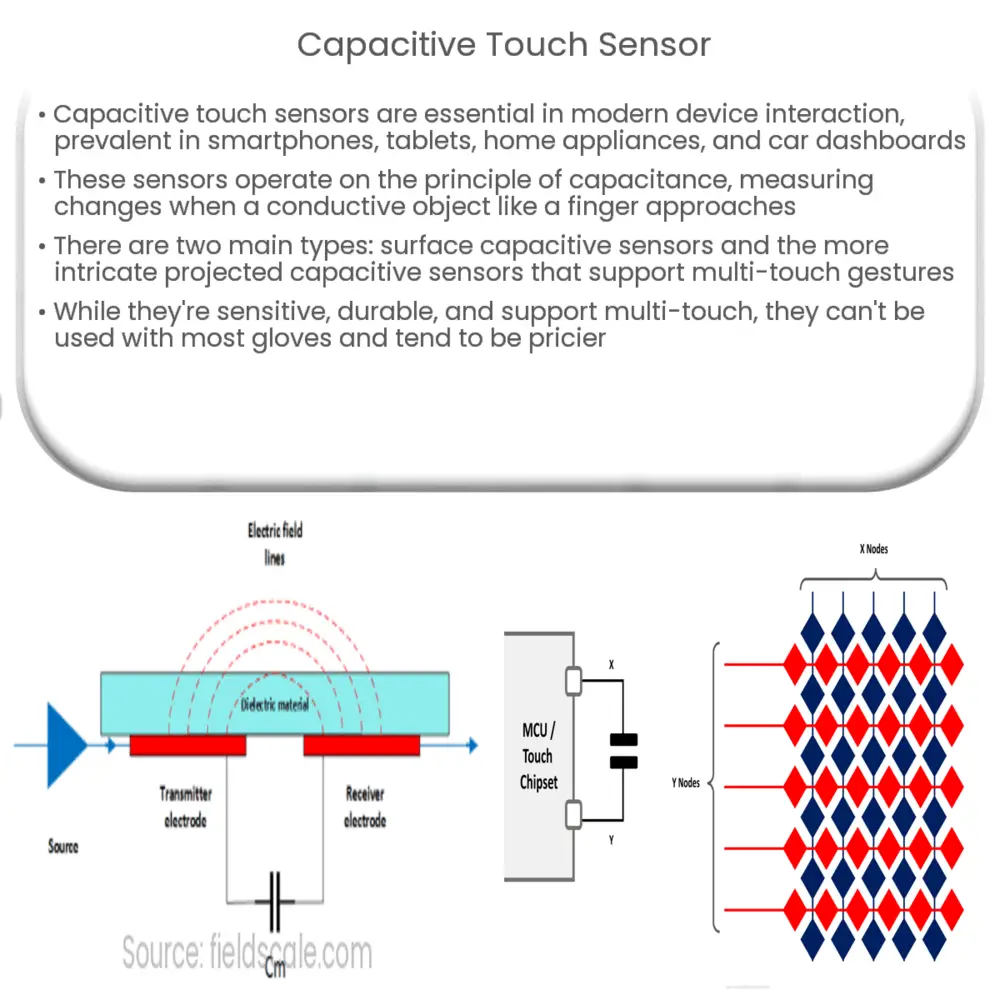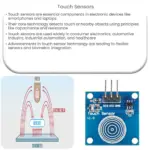Explore the mechanics, applications, and pros & cons of capacitive touch sensors, the technology that’s reshaping our interaction with devices.

Introduction to Capacitive Touch Sensors
With the rise of technology, our daily interactions with electronic devices have increased exponentially. One key component that has significantly transformed the way we interact with these devices is the capacitive touch sensor. This technology is not only ubiquitous in smartphones and tablets but also commonly found in appliances like washing machines, televisions, and even in certain car dashboards.
Understanding Capacitive Touch Sensor Technology
Capacitive touch sensors work on the fundamental principle of capacitance. Capacitance is the ability of a system to store an electric charge. These sensors essentially create a capacitor that includes the human body as one of the conductive plates.
There are two main types of capacitive touch sensors:
How Capacitive Touch Sensors Work
At the most basic level, a capacitive touch sensor works by measuring changes in an electrical property called capacitance. Capacitance describes how two conductive objects with a space between them respond to a voltage difference applied to them. When your finger, a conductive object, touches the device screen, it changes the capacitance of the sensor.
Let’s break down the process further:
One notable feature of capacitive sensors compared to other types of touch sensors is that they do not require pressure to register a touch. Instead, they depend on the electrical charge that is naturally present in the human body.
Applications of Capacitive Touch Sensors
Capacitive touch sensors have revolutionized the user interface design in a wide range of electronic products. Here are a few key applications:
Advantages and Disadvantages of Capacitive Touch Sensors
Like any technology, capacitive touch sensors come with their own set of advantages and disadvantages.
Conclusion
In conclusion, capacitive touch sensors have become an integral part of our daily lives, offering intuitive and efficient user experiences across a range of devices. While they may have some limitations, their advantages in terms of sensitivity, durability, and multi-touch capability make them a popular choice for many applications. As technology continues to evolve, we can expect to see further advancements in capacitive touch sensor technology, enhancing our interaction with electronic devices even further.



